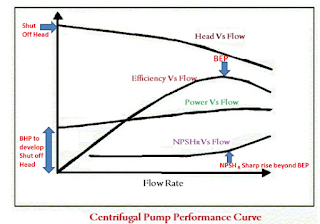CPP- Co-generation Power Plant.
I spent some good amount of time in Thermal Power Plants.I will try to give you a brief idea on the same.
CPP is nothing but a Power plant which is a facility that is built in plant per-misses for supplying the power requirements for flagship products. Definitely would be much inexpensive price of 3.5 Rs/KWH to 4.5 Rs/KWH than grid supplies which is around ~6 Rs/KWH to 9 Rs/KWH tariffs may change from state to state...which is generation cost for a CPP... This may also study on the abundance of natural resource like water and coal which are the main inputs for Thermal Power Plants.
There will be only two broad areas in power plant Turbine area and Boiler area. There is a plenty of material for process understanding of thermal power plants in internet.So lets only focus on cost point of view and some main parameters which will define the performance of Power plant.
Coal:
In a normal scenario 0.8 to 1 Kg of coal will consumed for producing 1 KWH of Power... REALLY!!! Yes most of the Power plant companies knows it because of Ash% which will be around 25% to 40%.So credit is Ash can also be supplied to Cement industry and also as a brick production.
That says 0.5 Kg which is of 1 Pound is ideally required to produce 1 KWH.
People will blend different types of coal for optimum results.
TG Heat Rate which is the Thermal to Electrical Energy ratio decides the efficiency of TG Set. Which ideally needs to be minimum. What i observed is it will be around 2500 Kcal/KWH to 3000 Kcal/KWH...So coal GCV is the one which can enhance these numbers which is having a range of (3200 Kcal to 3900 Kcal).
Station Heat Rate is TGHR/Boiler Efficiency ideally people expect 100% efficiently the boiler should run. But may possible if we use Direct method calculations.
Water:
From where DM water is prepared...which is ultimately used for steam production.Online sensors and lab test for water like Ph,Conductivity is the main parameters under the scanner for performance improvements in Thermal Power Plants.
Auxiliary:
Means Supporting equipment to handle water, coal and air. like BFP,PA FAN,SA FAN,ID FAN etc.
People will definitely focus on reducing this because there will be around 10 to 15% auxiliary consumption when compared to Production. So nearly 1 MW for every 10 MW Production.
Right ratios and loading will decide minimizing the % consumption of Auxiliaries.
I spent some good amount of time in Thermal Power Plants.I will try to give you a brief idea on the same.
CPP is nothing but a Power plant which is a facility that is built in plant per-misses for supplying the power requirements for flagship products. Definitely would be much inexpensive price of 3.5 Rs/KWH to 4.5 Rs/KWH than grid supplies which is around ~6 Rs/KWH to 9 Rs/KWH tariffs may change from state to state...which is generation cost for a CPP... This may also study on the abundance of natural resource like water and coal which are the main inputs for Thermal Power Plants.
There will be only two broad areas in power plant Turbine area and Boiler area. There is a plenty of material for process understanding of thermal power plants in internet.So lets only focus on cost point of view and some main parameters which will define the performance of Power plant.
Coal:
In a normal scenario 0.8 to 1 Kg of coal will consumed for producing 1 KWH of Power... REALLY!!! Yes most of the Power plant companies knows it because of Ash% which will be around 25% to 40%.So credit is Ash can also be supplied to Cement industry and also as a brick production.
That says 0.5 Kg which is of 1 Pound is ideally required to produce 1 KWH.
People will blend different types of coal for optimum results.
TG Heat Rate which is the Thermal to Electrical Energy ratio decides the efficiency of TG Set. Which ideally needs to be minimum. What i observed is it will be around 2500 Kcal/KWH to 3000 Kcal/KWH...So coal GCV is the one which can enhance these numbers which is having a range of (3200 Kcal to 3900 Kcal).
Station Heat Rate is TGHR/Boiler Efficiency ideally people expect 100% efficiently the boiler should run. But may possible if we use Direct method calculations.
Water:
From where DM water is prepared...which is ultimately used for steam production.Online sensors and lab test for water like Ph,Conductivity is the main parameters under the scanner for performance improvements in Thermal Power Plants.
Auxiliary:
Means Supporting equipment to handle water, coal and air. like BFP,PA FAN,SA FAN,ID FAN etc.
People will definitely focus on reducing this because there will be around 10 to 15% auxiliary consumption when compared to Production. So nearly 1 MW for every 10 MW Production.
Right ratios and loading will decide minimizing the % consumption of Auxiliaries.




